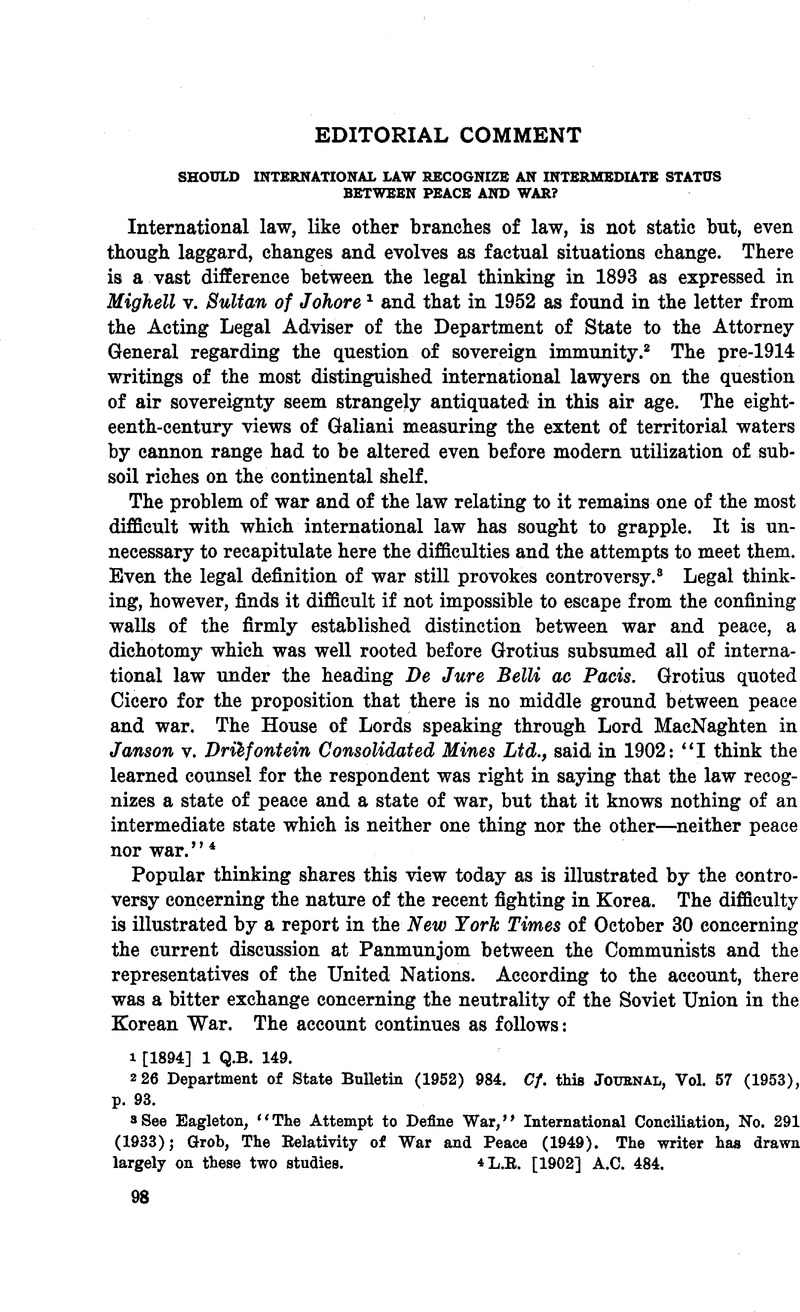Published online by Cambridge University Press: 30 March 2017

1 [1894] 1 Q.B. 149.
2 26 Department of State Bulletin (1952) 984. Cf. this Journal, Vol. 57 (1953), p. 93.
3 See Eagleton, “The Attempt to Define War,” International Conciliation, No. 291 (1933); Grob, The Relativity of War and Peace (1949). The writer has drawn largely on these two studies.
4 L.B. [1902] A.C. 484.
5 See Tinch, “Quasi-War Between Japan and the U.S.S.B., 1937–1939,” World Politics, Vol; III (1951), p. 174.
6 See the references collected in Briggs, The Law of Nations (2d ed., 1952), p. 975. It is interesting to compare the increasing emphasis on intent in the matter of recognition; cf. id., pp. 126–127.
7 The writer has developed these ideas somewhat more fully in a lecture at the University of Oslo published in 23 Nordisk Tidsskrift for international Ret (1953) 16.
8 Cf. Nussbaum, A Concise History of the Law of Nations (1947), pp. 26–27; and “Forms and Observances of Treaties in the Middle Ages and Early 16th Century,” in Law and Politics in the World Community (1954), p. 195.
9 In a Foreword to Grob, op. cit. (note 3), at p. x.
1 Duncan Hall, H., Mandates, Dependencies and Trusteeships (Washington, 1948), p. 273 Google Scholar.
2 The Charter, as an international treaty, is not binding on non-Members. Portugal and Spain, have, therefore, no obligation under Chapter XI with regard to their colonies.
3 Kelsen, Hans, The Law of the United Nations (London, 1950), p. 553 Google Scholar.
4 Goodrich and Hambro, Charter of the United Nations (2nd ed., Boston, 1949), p. 406 Google Scholar.
5 Ross, Alf, Constitution of the United Nations (New York, 1950), p. 186 Google Scholar.